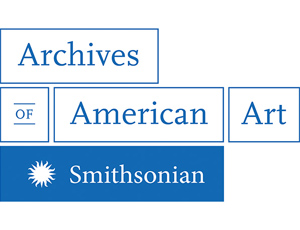The Black Art Historian and the Visual Legacy of Revlon’s “Polished Ambers”
/https://tf-cmsv2-smithsonianmag-media.s3.amazonaws.com/blogging/featured/AAA_wilsjudi_62738-crop_SIV.jpg)
In the summer of 1980, art historian and critic Judith Wilson was commissioned by Essence magazine, a Black women’s publication founded in 1970, to conduct interviews with Black women visual artists working in the new decade. An Essence typescript memo in the Judith Wilson papers, dated September of the same year, shows a request for Wilson’s expertise in the formation of a list of Black women artists, a list that would be forwarded to none other than the multinational cosmetics powerhouse Revlon. In anticipation of a possible “Polished Ambers” promotion set to run in 1981, Essence positioned itself in collaboration with Revlon and its efforts to craft a campaign that was slated to “involve Black women artists across the country.”
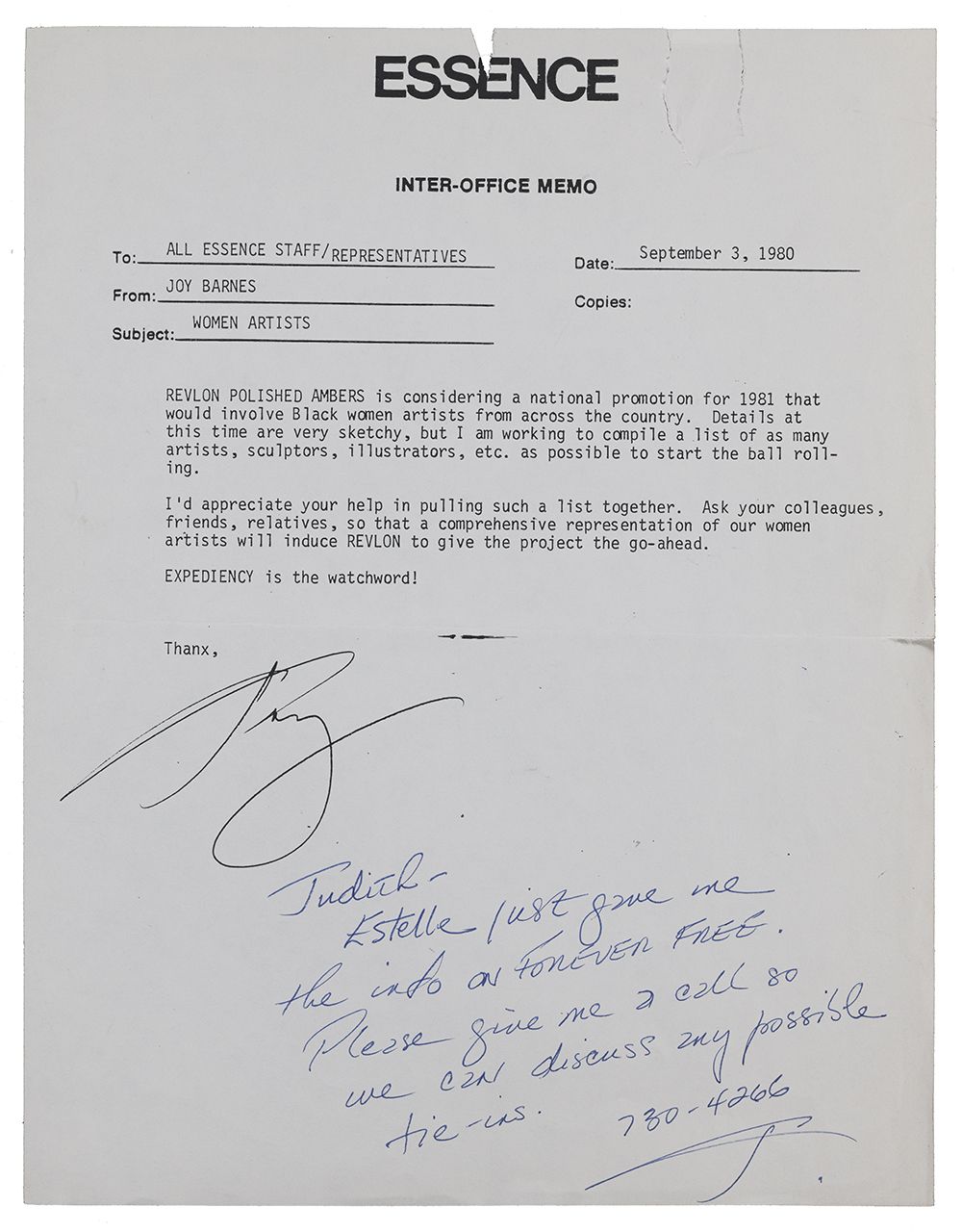
Polished Ambers, Revlon’s cosmetic line for Black women, was a short-lived campaign that began in 1975 in an effort to “capture the upscale ethnic market.” Highly artistic, the brand largely introduced itself to its target audience through eye-catching visuals rather than product testimonials. Harnessing the power of affirming imagery, Polished Ambers advertisements featured Black models like Iman, Peggy Dillard-Toone, and Gail Kendrick. Signing an unprecedented two-year, six- figure deal with Iman, Revlon’s campaign gave Black beauty the commercial treatment which, as Black Enterprise pointed out in 1978, Black-owned cosmetics businesses had long been denied. Adopting a refined aesthetic and trafficking in emotional appeals, a few of the ads for Polished Ambers featured Black women in mink coats and/or corporate wear, their images fixed alongside slogans that suggested a knowledge of the racial beauty politics facing African Americans. “You don’t have to borrow anybody else’s beauty,” one ad declares.
In a way, amber, the inspiration for the cosmetic line’s chosen name, is another testament to “unborrowed” beauty. A resin with vibrant honey coloring, amber is a gemstone prized for its unprocessed pigment and allure. In raw form, amber can appear yellow, green, red, blue, brown, or even orange. Serving as both a source for folk medicine and jewelry, it is a multipurpose resource that has been treasured since antiquity. Polished amber, for which Revlon’s ethnic beauty campaign was named, refers to that amber which has undergone a strenuous process. To be polished is to be heated and pressure-treated in the interest of producing shine. In deliberately associating the cosmetic line with this iteration of amber, Polished Ambers connotes service to a beauty under pressure.
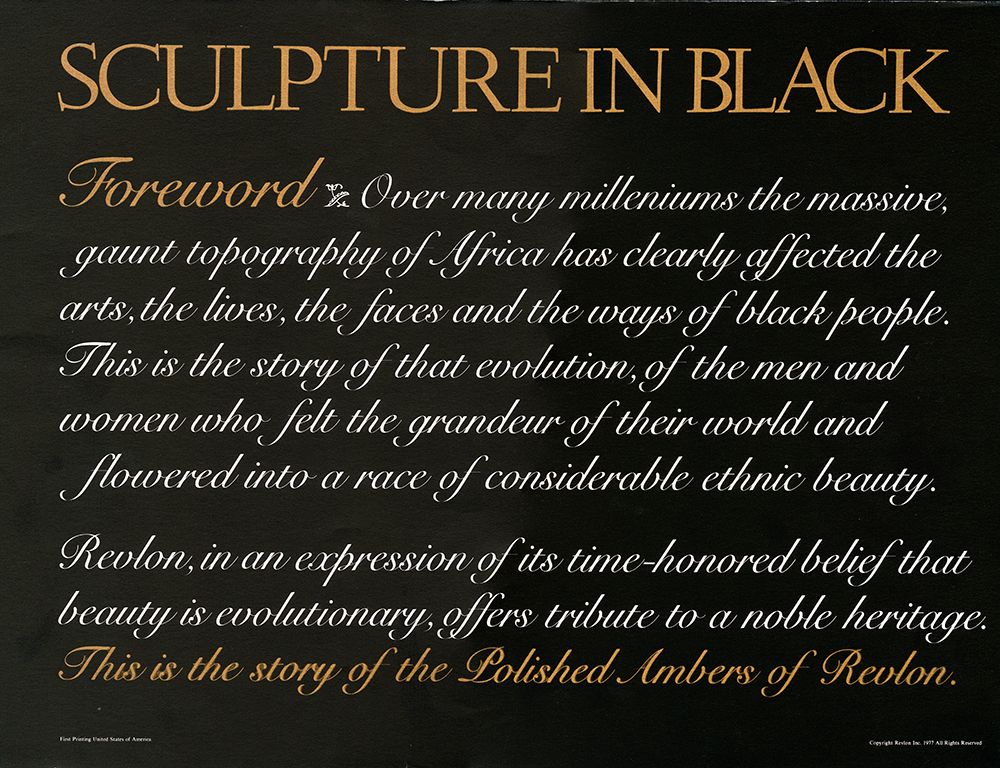
In a 1977 “Polished Ambers” ad, a young Iman is photographed by wildlife and fashion photographer Peter Beard who famously discovered and photographed the young university student-turned-supermodel in 1975. Red-lipped with her hair pushed back, she is clad in a gold necklace, which reads like a stylistic nod to the broad collars of Ancient Egypt. Other spreads feature this image reflected back to itself, offering mirrored versions of the “million dollar face” of Black beauty—a trope that recurs throughout the Polished Ambers promotion material. An aesthetic outlier from these glossier visuals, an untitled 1978 image for Polished Ambers, photographed by Gordon Parks, an African American photographer renowned for his photojournalism, depicts a distinctly different image of Iman’s glamour. Flanked on each side by West African totems, Iman stands before an almost cavernous backdrop, draped in a cream-colored and layered, one-shoulder columnar dress. Where the other campaign images divorced Revlon’s Black beauties from any discernable signs of the world, Parks’ photograph takes an interesting turn, instead marrying Iman—a contemporary Black fashion icon—to the sartorial and artistic histories of the African continent.
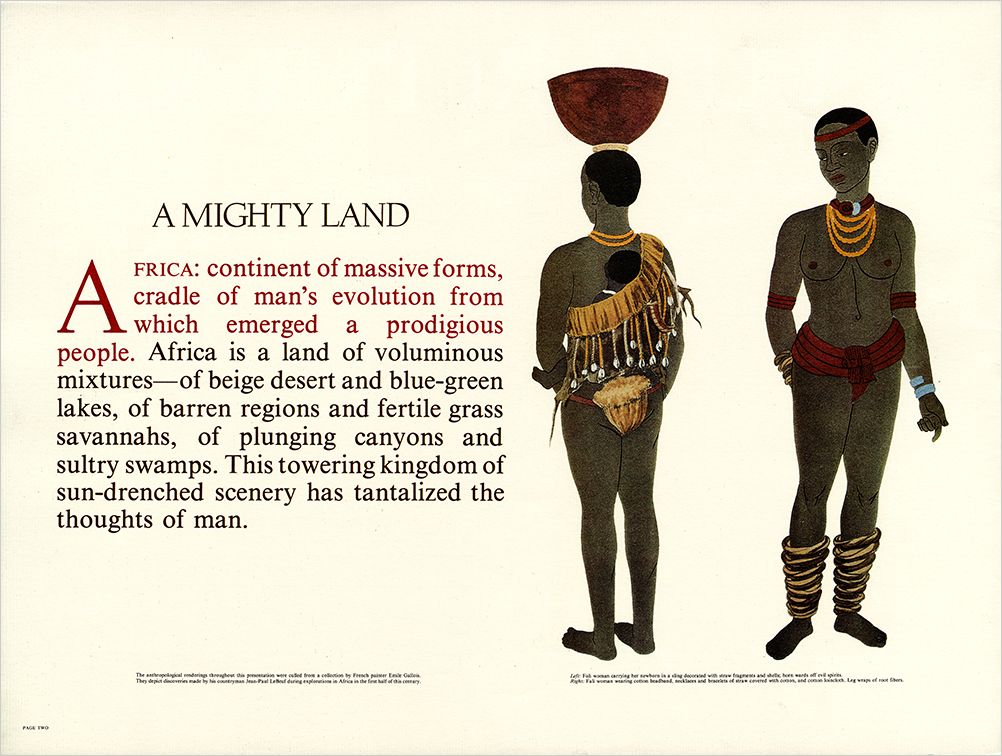
Based on the advertisement images that remain accessible online, one might attribute this artistic diversion to the creative liberties taken by Parks as a photographer with a vision. But, upon further archival investigation, we can begin to see another lens at work in Revlon’s interaction with Black American women as consumers interested in beauty culture, a lens that bends toward ethnography. Within the National Museum of American History’s Revlon Collection, there is material from the 1977 Polished Ambers campaign. Amongst this material is a large promotional book for Polished Ambers of Revlon to be displayed for merchandising purposes. Inside the elaborate catalog text are descriptions of the Polished Ambers line, makeup drawings, advertisement photographs, and curiously, a brief history of pre-colonial African tribal fashions and artistic practices accompanied by colonial illustrations and cartography. In golden cursive lettering, the book introduces Polished Ambers’ intention to enhance the “particular” beauty of “the Black woman.” Pages later, however, the brand appears to be far more preoccupied with tracing the anthropological legacy from whence “the Black woman” came.
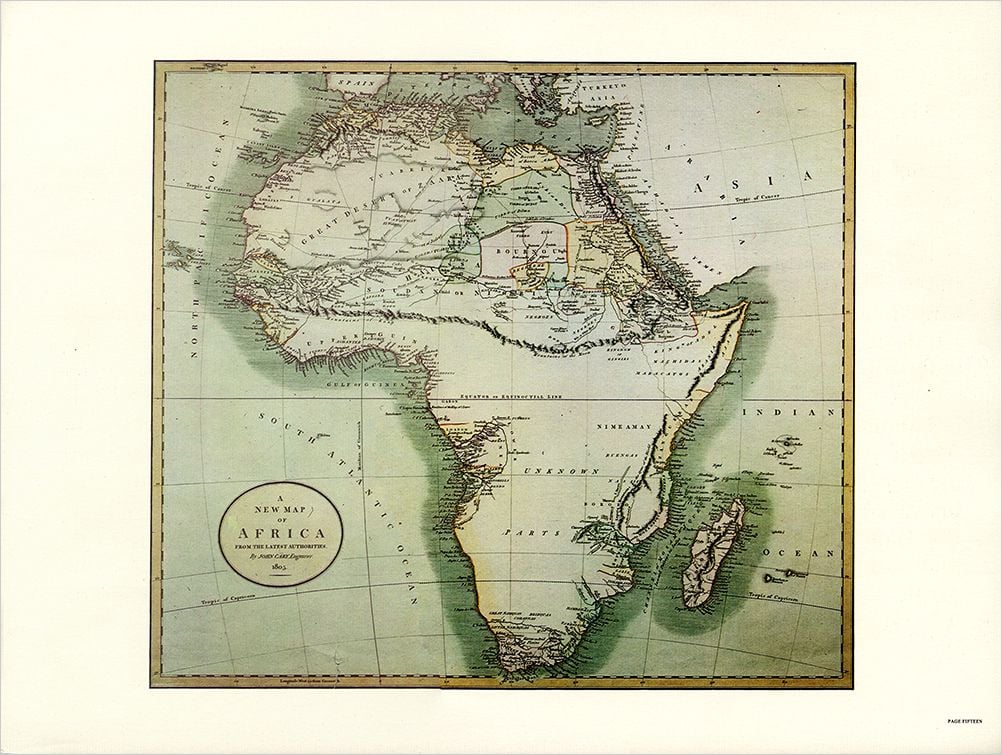
By dedicating entire spreads in the promotional book to the vibrant ethnographic images of French painter Emile Gallois—a colonial era artist whose art “depict[s] [the] discoveries of his countryman Jean-Paul LeBeuf during explorations in Africa in the first half of this century”—Polished Ambers reveals a cognitive dissonance within its marketing message. At once, the cosmetic line seeks to affirm its modern Black consumer base while also obsessing over the “origins” of their existence. On the last page of the catalog’s history section, an 1805 atlas map of Africa again directs our attention to the matter of African authenticity. Engraved and published by cartographer John Cary, the map is entitled, “a new map of Africa, from the latest authorities.” Large and meticulously rendered, the map depicts a barren Southern Africa, a geographic question mark likely corroborated by similar “authorities,” i.e. other European cartographers of the nineteenth century. The map labels the Southern region of the continent for its “unknown parts” in a way that is not dissimilar from Revlon’s larger efforts to traverse uncharted consumer territory with racially-specific cosmetics. Both practices are all too fraught with presumption. The audacity of the map’s declaration still begs the question: to whom are these parts “unknown”?
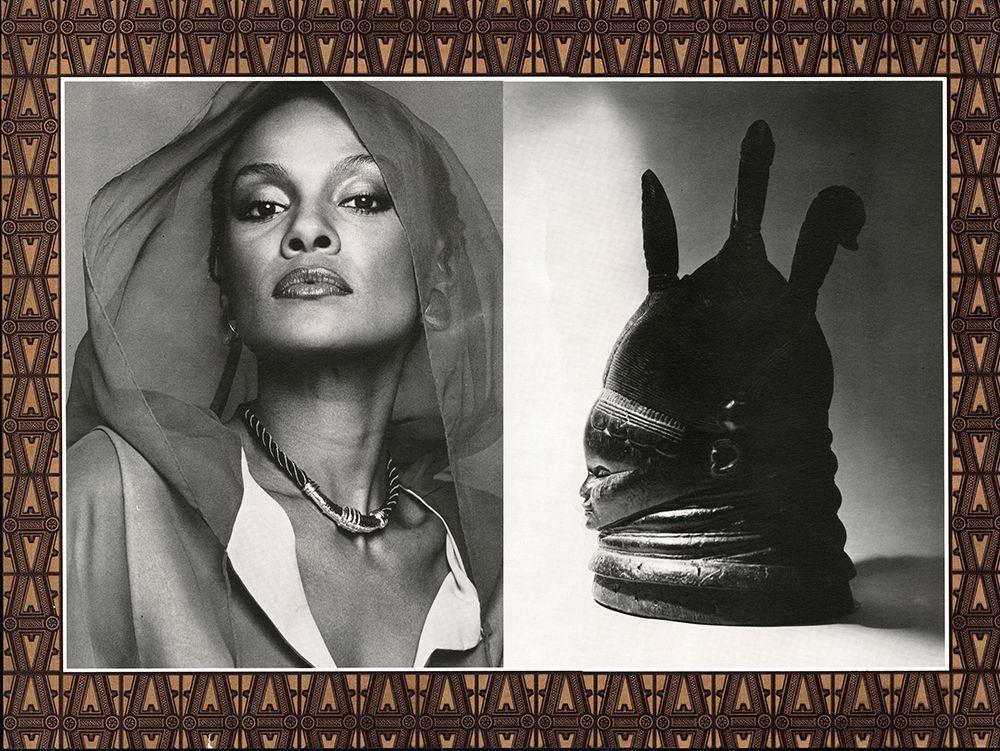
In the final promotional pages of the Polished Ambers catalog book, images of models Iman, Coco Mitchell, Peggy Dillard, and actress Tamara Dobson are juxtaposed with African sculptures that depict the female form. In effect, the photographs seem to force association between the faces of these contemporary Black women and a series of African artifacts that are stripped of their spiritual or artistic significance. Blurring the lines between people of African descent and African artifacts, the images strive for the very transmutation embodied within brand statements that speak of the “sculptured faces” and “dark beauty” of twentieth century Black female consumers. Transcending time, geography, and ethnicity, the Polished Ambers catalog today reads like a corporation’s failed attempt to adopt Afro-centrism into its commercial lingua franca. Released the same year that Alex Haley’s unprecedented trans-Atlantic miniseries Roots—the critically-acclaimed multi-generational and transcontinental story of an African man and his descendants forced into slavery in the American South—aired on ABC, an argument could be made for regarding this promotional material as a sign of a Pan-African 1970s.
Following the 1950s and 60s, when the nation’s counter-cultural movements—namely The Black Power Movement and the Women’s movement—asserted the political power of the “natural” bare-faced agent of change, companies like Revlon entered a beauty culture that was actively redefining beauty. Making a case for beautification that retained the visual markers of the Civil Rights era’s aesthetic revolution, the Polished Ambers campaign’s capital hinged on the visual potency of its chosen subjects, Black models with browner skin-tones, afros, and braids. Still, as consumers we should be cautious not to mistake these political appeals for any real political alignment. After all, the success of the cosmetic industry requires that our social incentive to be polished and prettified will inspire the impulse of consumption, rather than that of cultural criticism.
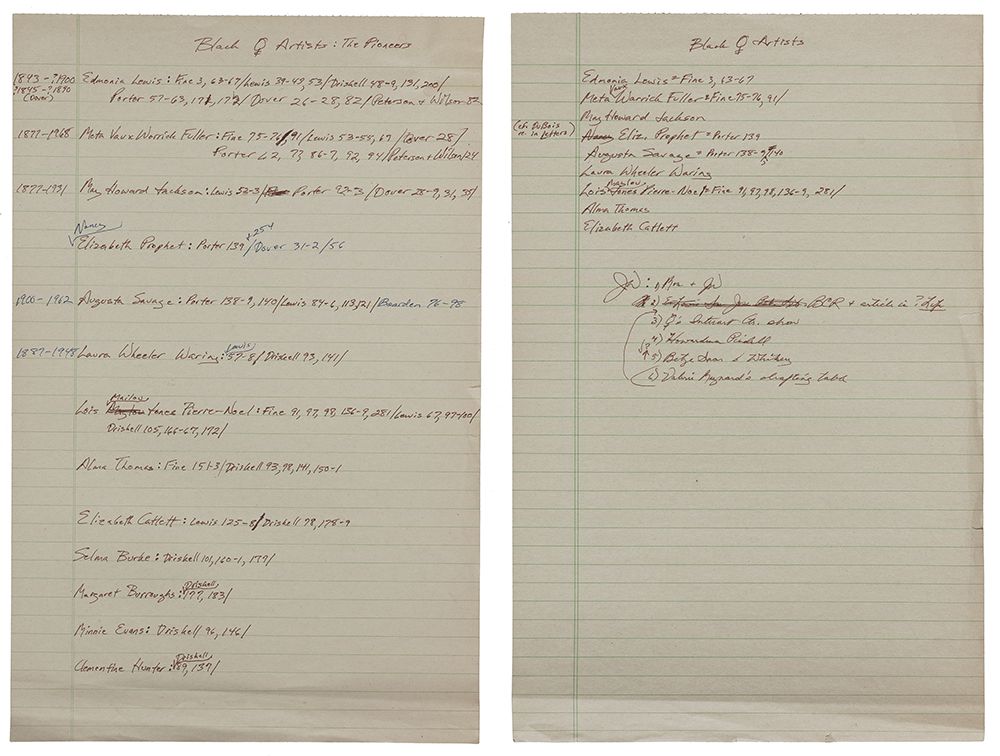
So why then did Revlon and Essence seek out an art historian in the first place? How might we come to understand the notable urgency of Essence’s request for Wilson’s assistance? “Expediency is the watchword,” the memo reads. Expediency is such an interesting word choice. For the noun describes a way of being or action that is most concerned with ends rather than means. At a time when national cosmetics titans like Revlon and L’Oréal struggled to break into the Black market, publications like Essence and writers like Judith Wilson who held a wealth of knowledge regarding African American culture(s), had grown increasingly valuable to beauty corporations. Under the right circumstances, even the expertise of the critic-historian, so rarely privileged by American corporations, could prove economically advantageous. In spite of it all, capitalism is notoriously adaptive. Faced with marketing to an underserved consumer base, Revlon enlisted support from those who understood the relationship between art and audience. And who better than a Black art historian to demystify and articulate the aesthetic priorities and traditions of her people?
